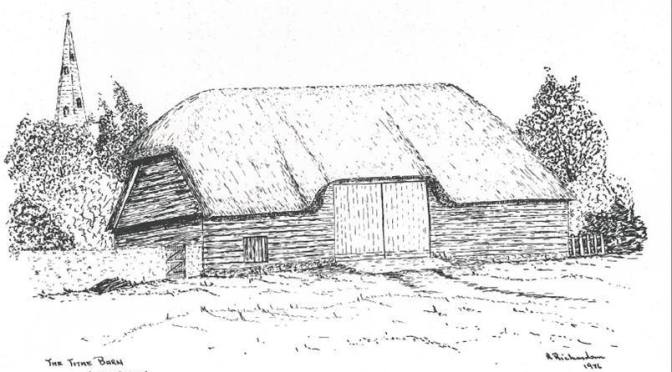Landbeach Tithe Barn has been put to many uses in its long history and, as part of ensuring it becomes a valued asset appreciated by the local community, is available to host a diverse range of activities. It has been used both as a venue in which to display artworks and also has provided the inspiration for artists of many stripes. In this blog Mary Fraser, a local artist based in Girton, shares her thoughts on how the barn has served her as a source of inspiration.
I completed the Art and Design diploma (University of the Arts, London) at Cambridge Regional College in the summer of 2021, arriving a little late into the art community. I was delighted therefore when I met Melanie Hale, one of the trustees of the Tithe Barn Trust, at a life drawing class and she asked if I would be interested in joining a group of local artists to put on an exhibition at the tithe barn in Landbeach.
Melanie met me at the barn on a sunny morning in May to show me around and it was this visit that so inspired me to start thinking about the work for the July exhibition. This is an intriguing place to show art work, the internal space is imposing and stunning on its own account: not here the plain white silence of the traditional gallery wall; the timber walls and thatched roof will have to be a part of the exhibition too.
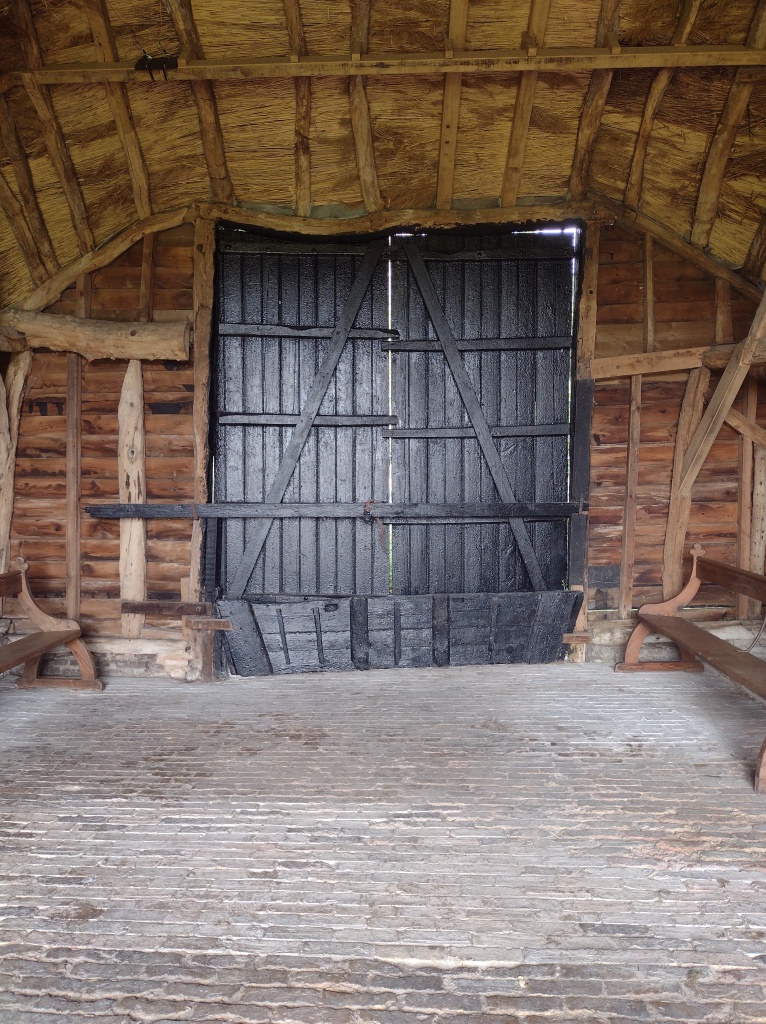
My inspiration often starts with a place but I spend a lot of time researching all kinds of elements that spring to mind as well as making lots of initial drawings before I start to develop my ideas. I was struck by the patterns made by repeated lines of timbers and made me think of lines of text holding words together.
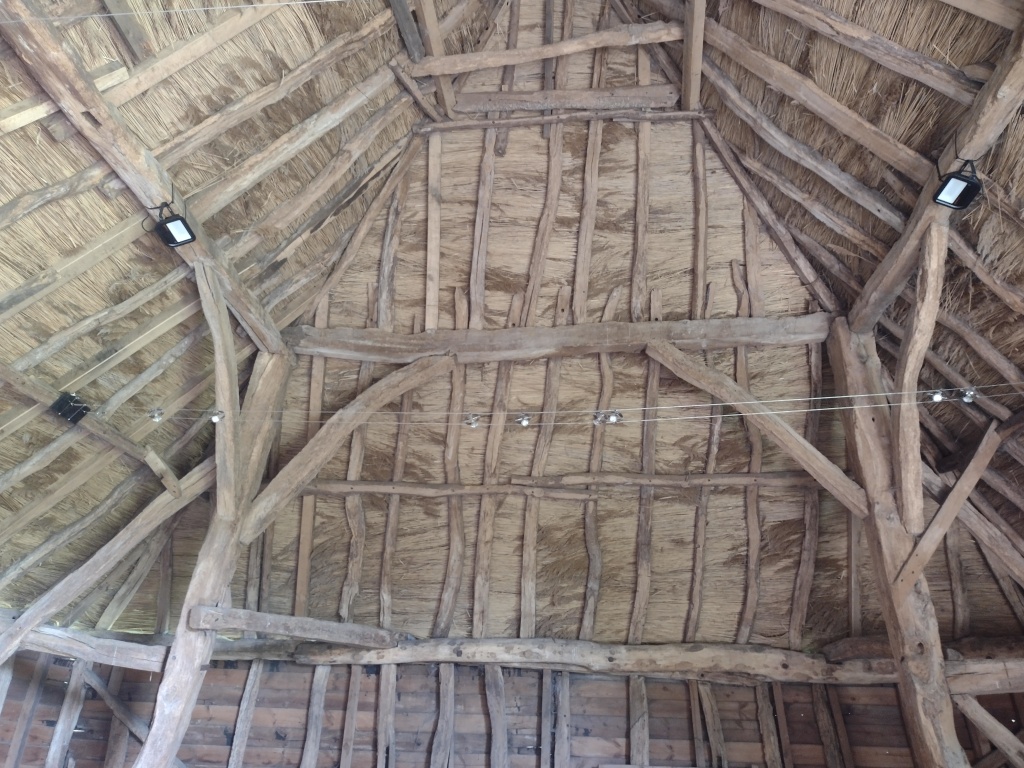
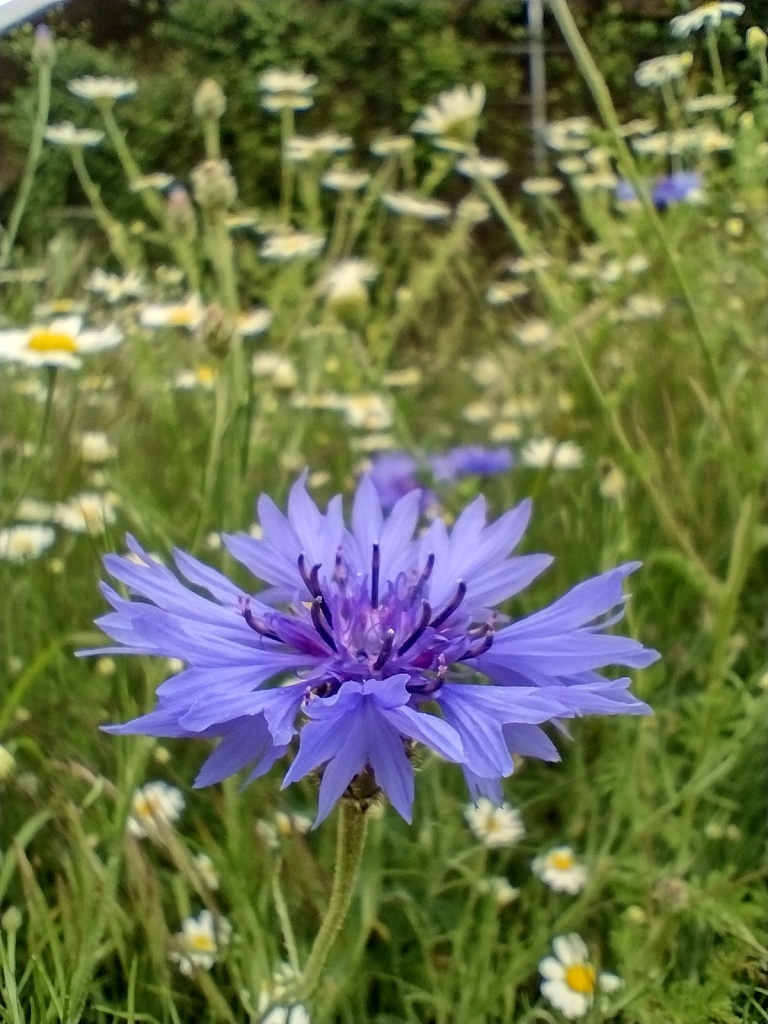
By the time I started working on making pictures it was June, and the season for cornflowers, a natural feature in cornfields of old, almost becoming extinct in the 70’s due to use of pesticides. The wide doors of the tithe barn were big enough to let the carts in to unload the newly harvested and gifted corn or wheat and a few stray cornflower seeds would no doubt have smuggled themselves in. Thinking about what the barn had been built for and what kind of things might have been stored there led to the creation of the first piece made for Landbeach: Cornfield. The lines of the barn timbers suggested to me the stems of growing wheat and I used the calligraphy text and golden stitched threads to tie Cornfield together. The solid gold waves representing the imagined vision of the movement of ears of wheat in the wind, across a rural landscape that might have once been seen looking out from the barn.
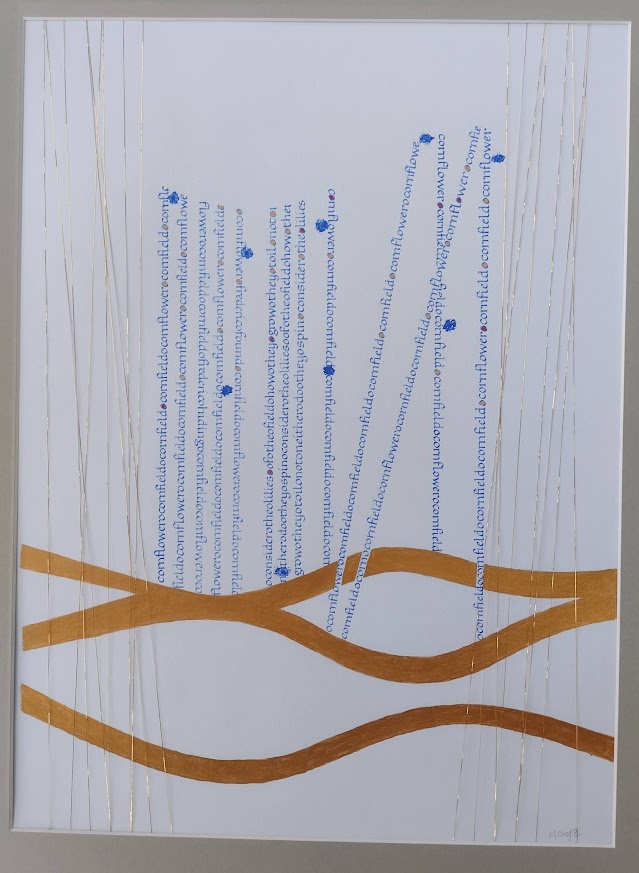
A palimpsest is a manuscript or paper that has been scrubbed clean and reused at a later date, often leaving slight traces of the original writing. In May 2021 The University Library in Cambridge put on an exhibition of the palimpsests in their collection Ghost Words: Reading the past | Cambridge University Library. I had been experimenting with palimpsests in an artwork that I showed at the Calligraphy and Lettering Arts Society AGM exhibition in London earlier this year. It seemed to me that the tithe barn as space for an art exhibition was its own palimpsest, reusing a place for a different purpose, but the ancient timbers still shine through alongside the new repairs as a backdrop for new uses. These ideas that worked themselves into my next piece: Still life, not still. The traditional genre of “still life” depicts one moment in time, but time is ever on its changing course and not still at all. Tracing the lines of the timbers as the design structure for calligraphic text, I then print over and cover this, using screen printing technique; on top of the screen printed ink, I use another technique of freehand scratching, and finally gold gilding: the final artwork has several layers, incorporating aspects of the earlier ones, like a palimpsest, and like the tithe barn.
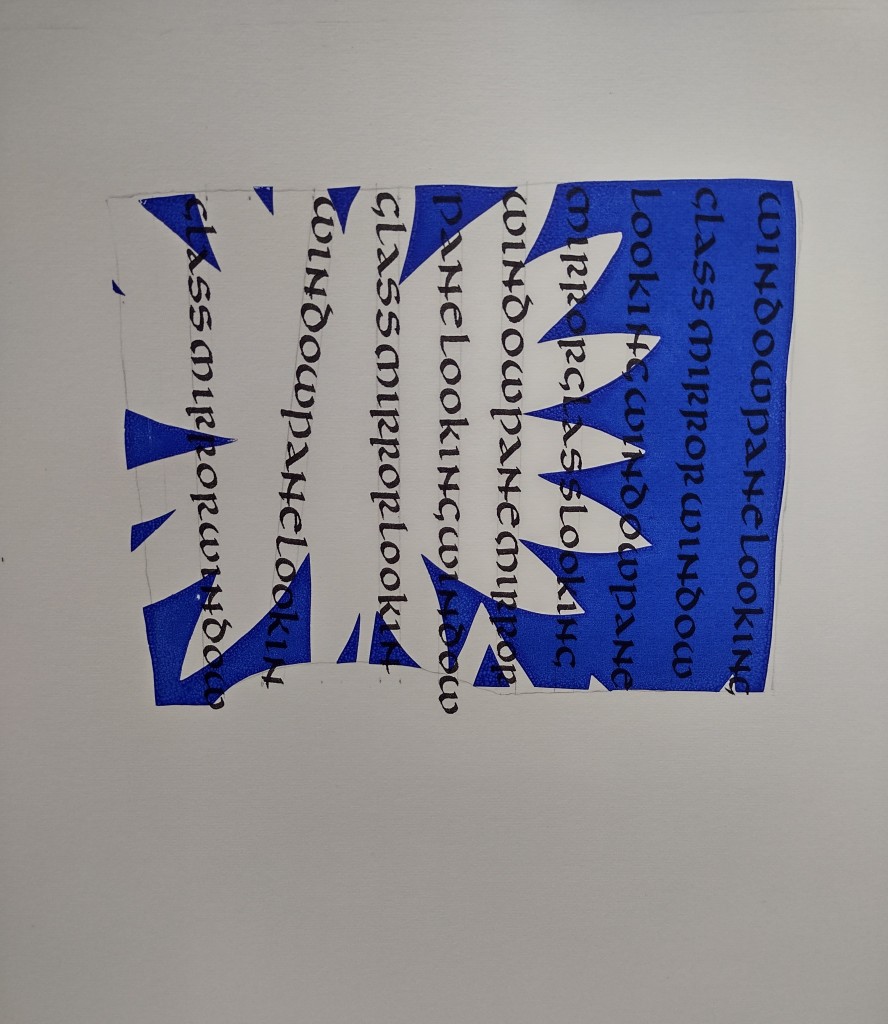
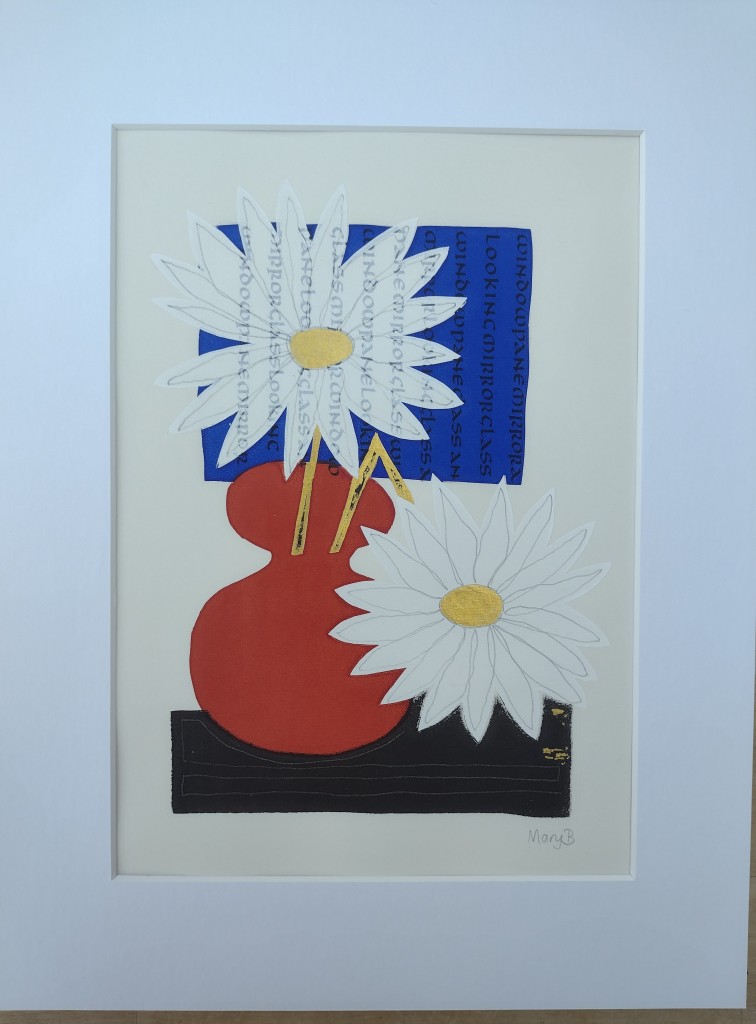
I like to use mixed media and for this exhibition I experimented contrasting the strict discipline of calligraphy with loose and free pencil marks. Many of my pieces have threads stitched in, to bind ideas together, sometimes using bookbinding tools as a nod to the ancient manuscripts where we are most used to seeing beautiful calligraphy.
Working on a new commissioned piece recently, I hid a tiny motif of an ear of wheat using thread and gold stitched over calligraphy (see below). The base for this was paper that I made up from pulping old scraps: always mindful of recycling, incorporating the old into the new, palimpsests and for me, the motif hints at “Cornfield” from Landbeach.
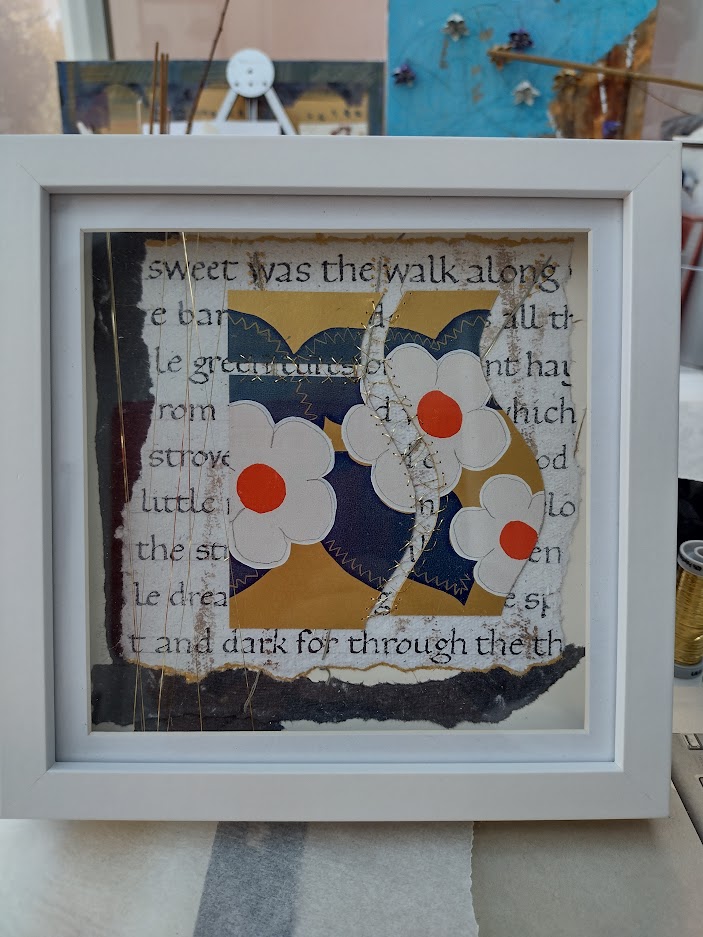
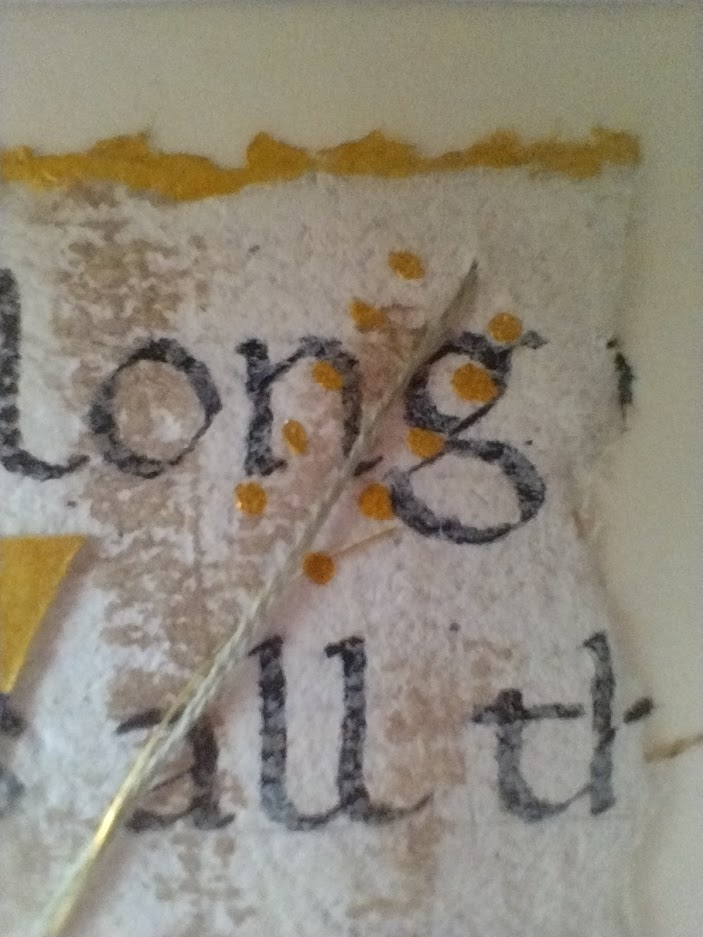
If you like my work and are interested in commissioning a piece of artwork to mark a special occasion please contact me at artbymarybee@gmail.com

